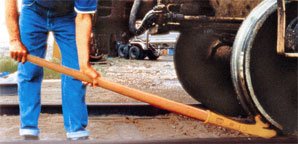- Joined
- Aug 31, 2001
- Messages
- 66,068
- Location
- South Bend, Indiana (near)
- Tractor
- Power Trac PT425 2001 Model Year
SnowRidge said:5. Yikes, I got it! Now what?
...which was my point.
Oh, I know you got it... now you gonna get it some more!
So I think we all agree that it can be done, thin wall tubing probably won't work well, the lever will have to be long and heavy, so long, in fact, that the PT425 may not be able to lift it, especially with a load, and if it does lift it, it may not be far enough to accomplish much without having to re-gip every couple of inches.
Hmmmm. Someone should make one anyway and see how it works.

